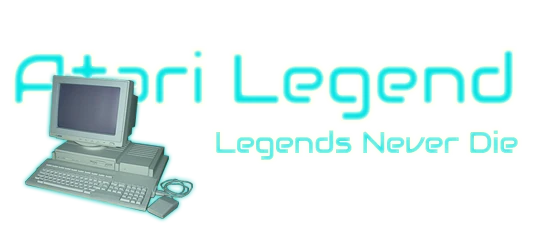

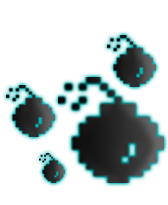





In 1986, Eckhard Kruse wanted to program in assembler on his Atari ST, but he could not find the software, so he build his own version of the assembly language tools for the system. He managed to create a music editor at the age of 16. But that was just the beginning. This is the story of one of the pioneers of the Atari ST scene. His Grafik und Sound demo is considered the first of its kind. He is also responsible for possibly the most famous monochrome game on the system, called Ballerburg.
There is currently no profile available in our database
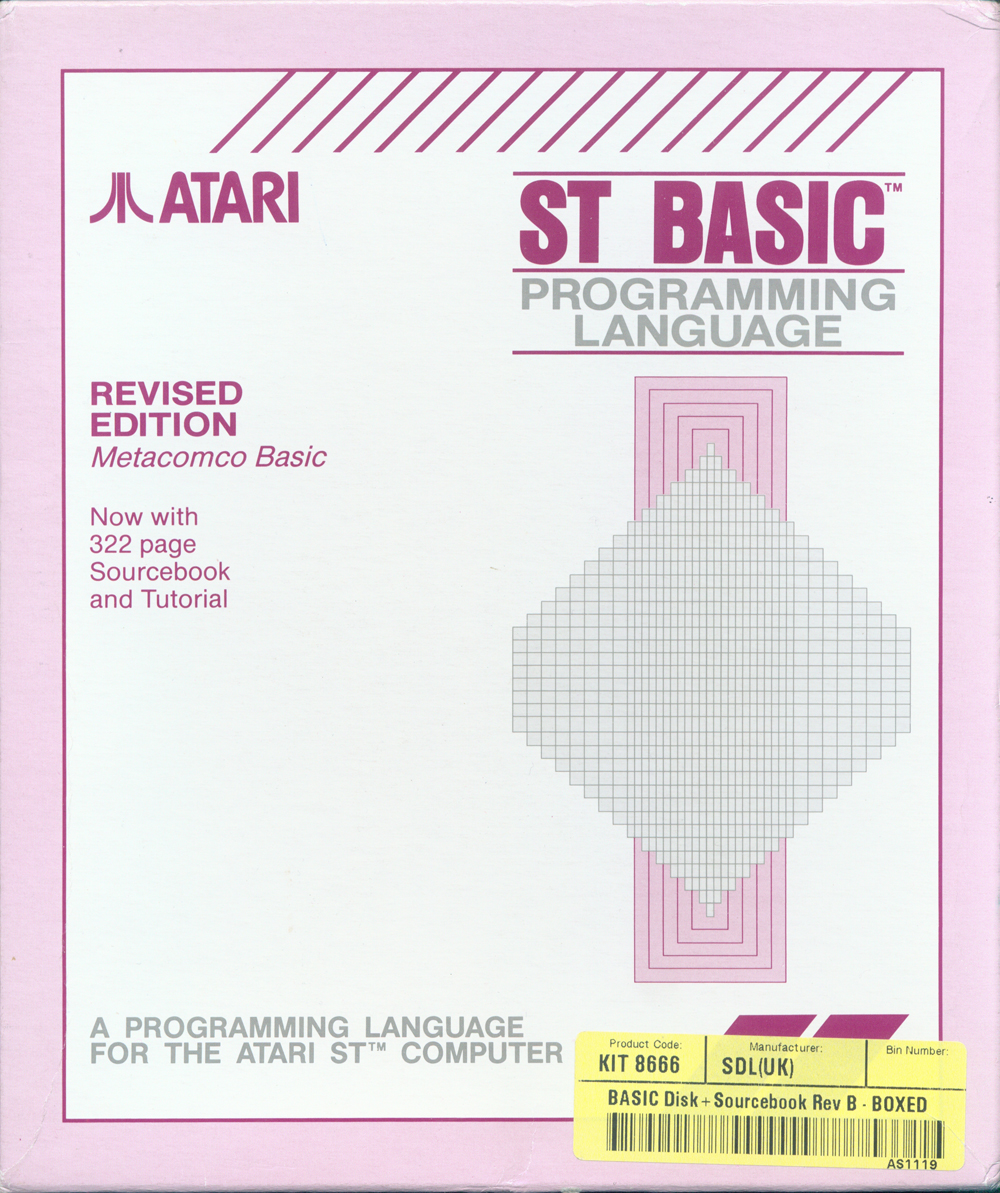
ST Basic must be one of the worst versions of the programming language ever. Yet Eckhart turned it into something amazing.
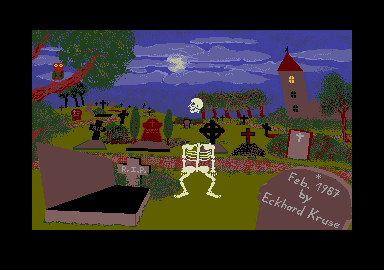
Grusel demo is a fan favorite to this day. Skeletons dancing to groovy chiptunes created with his own music editor software.
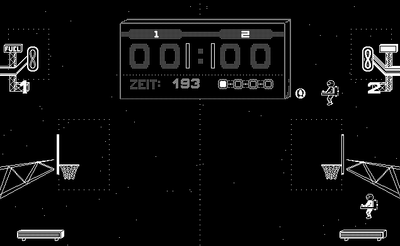
One of the final releases from Eckhart, Spaceball is a nice 2 player action game for the mono resolution.
1) Can you introduce yourself to the people who have not heard of you before?
From Atari ST perspective: I am the author of Ballerburg, a game which became quite popular in Germany. I wrote it in April 1987 while still going to school. I also wrote other ST programs such as the 'music editor' with which I won the first prize of a German ST computer magazine; the quite popular Graphics and Sound Demo and the Grusel Demo (Scary demo) for the color monitor, and tools such as a simulator for digital circuits, a midi sequencer and a 68000 assembler.
From today's 'everyday life' perspective: I work as professor for applied computer science at Baden Wuerttemberg State University, among others teaching a course on programming in C - the language I had already used on the Atari ST. Part of my spare time I spend on some 'weird stuff': parapsychology research. And I have published a book on science and spirituality (in German). (see also www.eckhardkruse.net )
2) Eckhard, on your website I read you had an Atari 800 before you bought the ST. But was the 800 your first computer? Do you remember when, how and why your fascination with computers started? And why did you buy the 800?
My father was the initial trigger for it all (a big thanks to him!). In 1982 (I was 13) there was the Atari 800 under the Christmas tree, the first computer I got in touch with. Even two months earlier I enthusiastically started reading books on programming and wrote (BASIC) programs on paper to be typed and tested once the Atari arrived in our living room. Since then, it had really absorbed me...
3) Where did you learn how to program and were you already programming on the 800? Did you create anything on this machine?
As mentioned above, I learned it by myself, reading books and magazines (Internet was not yet available...). On the 800 I started with BASIC but soon I got interested in machine language (for the 8-Bit processor 6502), because BASIC was much too slow. As I had no assembler software (everything was very expensive then), I simply typed the 8-Bit numbers of the CPU commands as long lists of data. I still know codes like 'load accumulator' ($A9 ...) by heart. I wrote lots of programs, mostly little games. Two of them became somewhat more visible and they are even mentioned on some 800 websites today: Boersenspiel (a stock exchange simulator game) and an adventure game ('Abenteuer in Schottland'![]() .
.
4) After the 800 you bought an Atari ST. I guess you were already an Atari fan by then? You were amazed by the specs of the 16 bit computers. But why the ST? Was it really a case of ‘power without the price’? You never considered the more powerful Amiga?
Again, my father was the main driver (and financer!) for buying the ST. We didn't even consider the Amiga, and I think I became popular only slightly later - at least in the computer shop of our hometown. Another reason: the ST offered the MIDI music interface, which was very attractive as both my father and I played keyboard/electronic organ.
5) When you were in highschool, you created the game Ballerburg. This was programmed in C, and you worked on it every afternoon for 1 month. What can you remember about the history of this project? What inspired you to create it?
I was always thinking about what to program next. From the Atari 800 I knew a very simple Artillery game, so somehow there was the idea to do it much butter and more complex on the ST. Once I have an idea that I really like, it simply draws me into it until the project is finished. And it was also really fun to test it / play it with my brother and my father.
6) At first sight, Ballerburg seems like a classic ‘Artillery’ game. But what strikes me, is that you added some strategic elements to this otherwise extremely simple concept. Not only do you have to take wind direction into account, or adjust the fire angle and amount of gunpowder for every shot. No, you even added some sort of economic element to it, in which you earn money that can be used to buy extra ammo, replace castles … According to the WIKI, you can even raise or lower taxes for your people? This is fascinating and to my knowledge, unseen back in those days in such a game. How did you come up with this aspect?
This was a very natural idea to me, because for a long time I also had been interested in strategy games regarding money, markets, economy, as with the 'stock exchange game' for the 800. Later, I also worked quite a bit on a multiplayer simulation game where you had to manage a factory, decide about products, production quantity, prices and market strategies, but I never finished it.
7) The ST line of computers was promoted in Germany and the Benelux as a serious machine, compared to the UK and France, where the ST was considered a gaming machine. Most SM124 (mono monitors) were sold in Germany because of this. I guess this is why you turned Ballerburg into a mono game? Did you ever consider making it a color game? I don’t understand, because if my research is correct, you created the Grafik Und Sound Demo before the game, and that was in color.
Well. weird times, there were two monitors on my desk and you had to change cables and reboot to switch between them. The color monitor was really expensive, so we did not buy the original Atari ST monitor but a no-name product. And, yes, I remained mostly focussed on the monochrome monitor, because it was the predominant one in Germany - and I loved the incredibly high resolution of 640x400 pixels. I even programmed a game (Spaceball) which simulated pixels with 'true' 50% gray color, i.e. avoiding dithering in black and white, by letting pixels flicker between black and white with 35 Hz. It looked great for fine details...
8) Have you ever received any requests for an English version of the game?
No. In these times it was even difficult to get in touch with the German ST community. In the ST magazines there were little ads offering disk collections with programs: that was the way how 'public domain software' (the terms freeware or shareware were not yet common) was typically distributed. I got donations via postal mail with a bill in the envelope and a return envelope and disk so I could send 'bonus material' back. Quite rarely, I also got letters from other countries such as France or the UK.
9) Let’s talk about your other work. Let’s go back a bit. In 1986 you created the Grafik und Sound Demo. This must be one of the first demos on the system. You are considered a pioneer by many. Is it correct you made your own version of Assembler to be able to program this demo, because at that time, only BASIC was available on the ST?
Yes, that is true. I can't remember exactly, maybe there was an assembler available, but then it was much too expensive. So initially I wrote an assembler in BASIC and then used that one to write a new assember version in assembler itself. That was really fast and cool!
10) Why did you create the demo? It has a really nice "Sesame Street" vibe to it. What inspired you? The demo even made it on the cover of ST Computer Magazin. This is now considered an absolute classic together with your Grusel demo. Care to comment?
An important part of the demo was the music, which I created with the 'music editor' I wrote before, so it was also a showcase for the music editor: it really impressed the people of the ST magazine - I still have the copy of that issue. It was especially fun to sync the music and the actions of the band. Apart from that this 'comic style' I simply like. I should mention, about ten years ago I was making short films, often with 3D animations which probably do not look that different, see e.g. Unity Day (Einheitstag), the 'German answer to Independence Day'.
11) You are a multi talented person. You even created a music editor which won 1st prize in ST Computer Magazin. Can you tell us a bit about the history of this project? And was this the first thing you ever did on the ST?
Again the music editor was simply a tool I initially wrote for myself, because I wanted to explore the sound capabilities of the ST. Then it grew bigger and more complex. I was especially proud of my idea to very flexibly edit vibrato, glissando and other effects by breaking down the musical bars in 1/96th portions, which could individually be set. Before that I did some other little projects, I think a MIDI sequencer was on of the first things I did.
12) You clearly have a talent in game design. Have you ever considered a career in the computer game industry?
No. While I was studying computer science, surprisingly, I hardly spent any time on the computer with programming. I was more interested in producing music (for which the Atari ST was still very helpful).
13) Looking at your about page, you worked in the areas of computer vision and robotics and your publications and patent applications are making my head spin. This sounds mighty interesting, can you explain in some simple words what this is all about? (I am a total Tesla freak, full self driving, artificial intelligence … )
Again, this was some time ago, my interests always move forward. To put it short, my PhD was about autonomous vehicles in factories guided by cameras mounted at the factory ceiling using some image processing and statistics on other dynamic obstacles, bottlenecks etc. - well, in fact somewhat related to autonomous driving. But talking about artificial intelligence and autonomous driving, I am convinced this whole topic is completely overrated. Of course, today's 'machine learning' technology can handle large amounts of data and produces amazing results in certain areas. But still it don't see any real 'intelligence' in there and I don't see that autonomous driving will work in city environments for the time to come - at least as long as bicycles, pedestrians etc. share the same space. Even in the 60s and 70s it was said in 10 years we will have completely computerized 'image unterstanding', autonomous driving etc. and now research still use the famous 'in 10 years'.
14) You seem to have a wide array of hobbies, you have written books, created short movies, created 3D animation and are a musician. Do you think the Atari ST played an important role in shaping you as the person you are today?
I wouldn't say the Atari ST shaped me. But due to my personal 'shape' and interest in many forms of creativity, it was natural to love programming it - and later do other things to express myself.
15) Do you still use Atari today?
No. It is still safely stored in the basement of my parent's home.
16) Do you have time to play computer games? Are you still interested in them? And if so, what is your all time favorite game?
No, after the Atari times, I hardly ever played computer games. It's not a matter of time, rather of choice. I have 24 hours each day like everybody else and I simply prefer doing other things, maybe also because being interested in computer games would probably mean spending many hours on them. But when e.g. my nephew shows me some new stuff, I am enthusiastic about what is possible today.
17) A question I always ask … If you could have a drink with anybody, dead or alive, who would it be and what would you ask him/her?
Hm, difficult... Maybe I would like to spend some time with (spiritual teacher) Eckhart Tolle. Not so much because I want to ask him anything, but because I just love his energy. Well, talking about spiritual people, of course a meeting with Jesus could be interesting. I would ask him what he really wanted us to teach about our human existence - rather than what the church is making out of it.
18) Do you have any final words of wisdom you like to share with the Atari community?
Well, no - true wisdom probably everybody has to find inside himself - at least, don't trust those people who claim to know the truth and what's best for us - such as governments, mass media and other power structures...
Thank you for your time, Eckhart.
Make sure to check our video as well.
August 5, 2025 by grams88
Martin Brownlow is a living legend. Best known among ST fans for creating the beloved PD/shareware classics Grav and Grav 2, his games are still cherished by many to this day. From a young age, Martin knew he wanted to make games for a living...and he made that dream a reality. In fact, he’s still doing it today. Discover the full story and much more in this exciting new interview.
October 4, 2024 by grams88
Stacey Jamieson began his career at DMA Design, working on titles such as Oh No! More Lemmings, Walker, GTA and others. Over the years, he moved on to Electronic Arts (EA), where he contributed to major games like the Star Wars Battlefront series, Mass Effect, and Need for Speed. Today, he is the co-founder of Expression Games, where he continues to pursue his passion for game development. What an exciting career!
July 29, 2024 by grams88
Who doesn't love a good underdog story? Chris Sharp is a noteworthy apprentice of the renowned François Lionet, as he mastered the art of coding with the almighty STOS Basic. Chris crafted a few games for our cherished ST, including fan favourites like Magic Tomb and the Freaked Out series. Intrigued? Dive into our interview to revisit the era when game development could still be a solo endeavour.
July 16, 2024 by grams88
When Sega released its Master System, it came bundled with the game Alex Kid. To this day the game remains very popular, loved by many. One of those people is Terry Lloyd. More so, Alex Kid was the main inspiration for the Atari ST platform classic Axel's Magic Hammer. But that is just one of his many accomplishments. Terry has been around the block. Working as an artist and game designer at the beginning of the 80's for Gremlin Graphics, he then moved on to Core Design, which he helped get off the ground. During the 90's he contributed to founding the company Malibu Interactive. On the Atari ST, Terry's resumé include Dynamite Dux, Car-Vup, Rick Dangerous 1 & 2, Torvak the Warrior, WarZone and many more. Read all about this veteran of the games industry in this exciting interview.
April 18, 2024 by grams88
It doesn't always have to be about computers, coding and graphics. Adrian Powell, the artist behind the original Lemmings game, crafted all its artwork, including box art and promotional materials. His passion for painting lemmings has persisted over time and he is still painting lemmings to this day. Powell's work remains influential and has helped selling millions of copies of this classic (ST) game.
Currently 0 registered users online
In the past 24h there were 4 registered users online